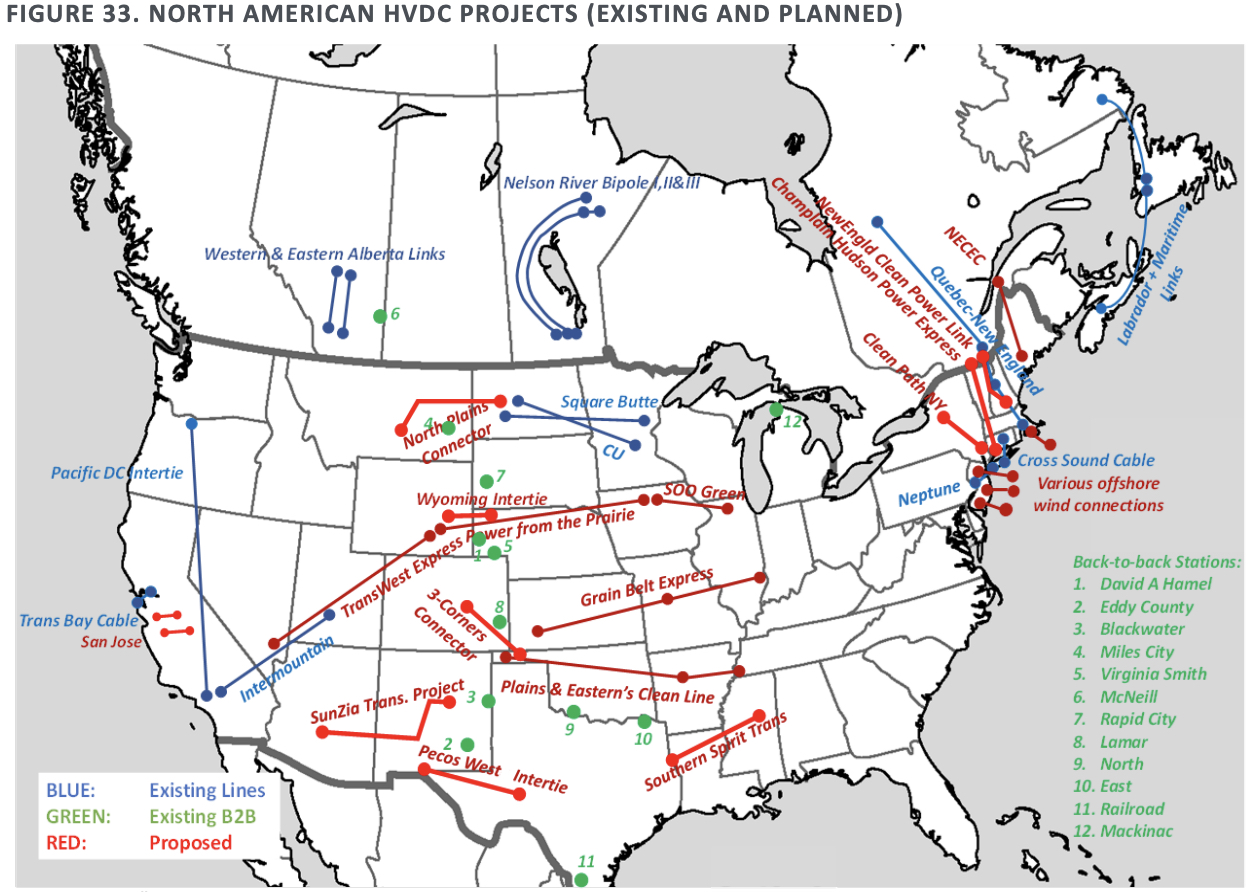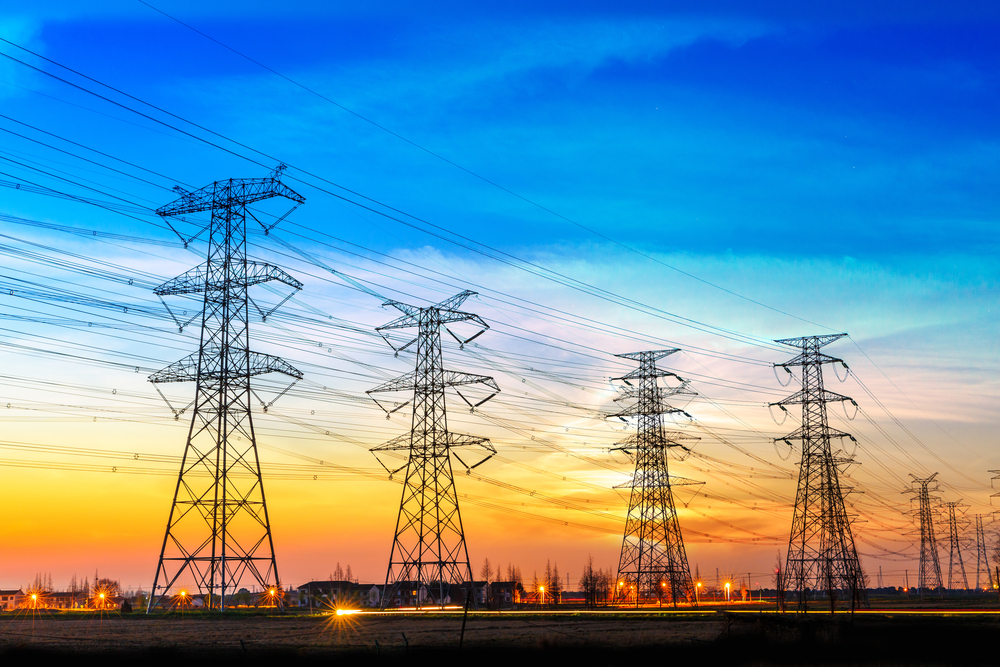A new technical report details the capabilities of high-voltage direct current (HVDC) transmission and describes about 20 HVDC projects globally that are designed to transmit wind power and hydropower. Only a few projects to date are designed to transmit solar power.
HVDC transmission over long distances costs less than alternating current (AC) transmission, said Cornelis Plet, vice president for power system advisory at DNV, on a webinar describing the report. That’s because while an HVDC line has a higher fixed cost, due to the need for a converter at each end where it connects to AC transmission, as shown in the image below, it has a lower cost per mile.

Image credit: The Brattle Group
Plet served as one of two senior authors of the 204-page report, along with Johannes Pfeifenberger, a principal with The Brattle Group consultancy.
The American Council on Renewable Energy (ACORE) said in a statement that the U.S. is “lagging on HVDC transmission deployment” and recommended deploying HVDC transmission “to deliver significant reliability, market and operational benefits.” ACORE, one of six report sponsors, also hosted the webinar.
Pfeifenberger, presenting a map (below) of existing and proposed HVDC projects in North America, highlighted the Pacific DC Intertie, completed in 1970 to bring hydropower to Los Angeles, but noted that most of the HVDC projects are in the planning stages, as shown in red. Most of those, he said, are proposed by merchant transmission providers and offshore wind developers, not grid operators, although the CAISO grid operator in California is pursuing HVDC.

Most of the proposed U.S. HVDC projects are focused on transmitting wind power, both onshore and offshore. The map also shows some hydropower transmission projects in the Northeast and a few intertie projects to connect the Eastern, Western and Texas interconnections.
The report lists five challenges to HVDC deployment. To address the challenges, the report makes nine recommendations that it says could be implemented through collaboration among grid planning authorities, transmission owners, HVDC equipment manufacturers, the North American Electric Reliability Corporation, industry groups, regulators, states, and the U.S. Department of Energy and its national labs.
The National Renewable Energy Laboratory’s “Interconnection Seams Study” showed that HVDC transmission could economically transmit solar power from sunnier U.S. regions to less sunny regions, but that adding HVDC transmission would not result in more solar capacity overall. Rather, it could lead to more solar development in sunnier regions but less solar development in other regions, leaving the total approximately unchanged.
Globally, however, Plet of DNV said that several HVDC lines to transmit solar energy are being planned between Africa and Europe, such as Xlinks and Tunita, while the Sun Cable link is planned between Australia and Singapore. “More such links are being planned around the Middle East,” he added.
The report by The Brattle Group and DNV is titled “The Operational and Market Benefits of HVDC to System Operators.”
This content is protected by copyright and may not be reused. If you want to cooperate with us and would like to reuse some of our content, please contact: editors@pv-magazine.com.








By submitting this form you agree to pv magazine using your data for the purposes of publishing your comment.
Your personal data will only be disclosed or otherwise transmitted to third parties for the purposes of spam filtering or if this is necessary for technical maintenance of the website. Any other transfer to third parties will not take place unless this is justified on the basis of applicable data protection regulations or if pv magazine is legally obliged to do so.
You may revoke this consent at any time with effect for the future, in which case your personal data will be deleted immediately. Otherwise, your data will be deleted if pv magazine has processed your request or the purpose of data storage is fulfilled.
Further information on data privacy can be found in our Data Protection Policy.